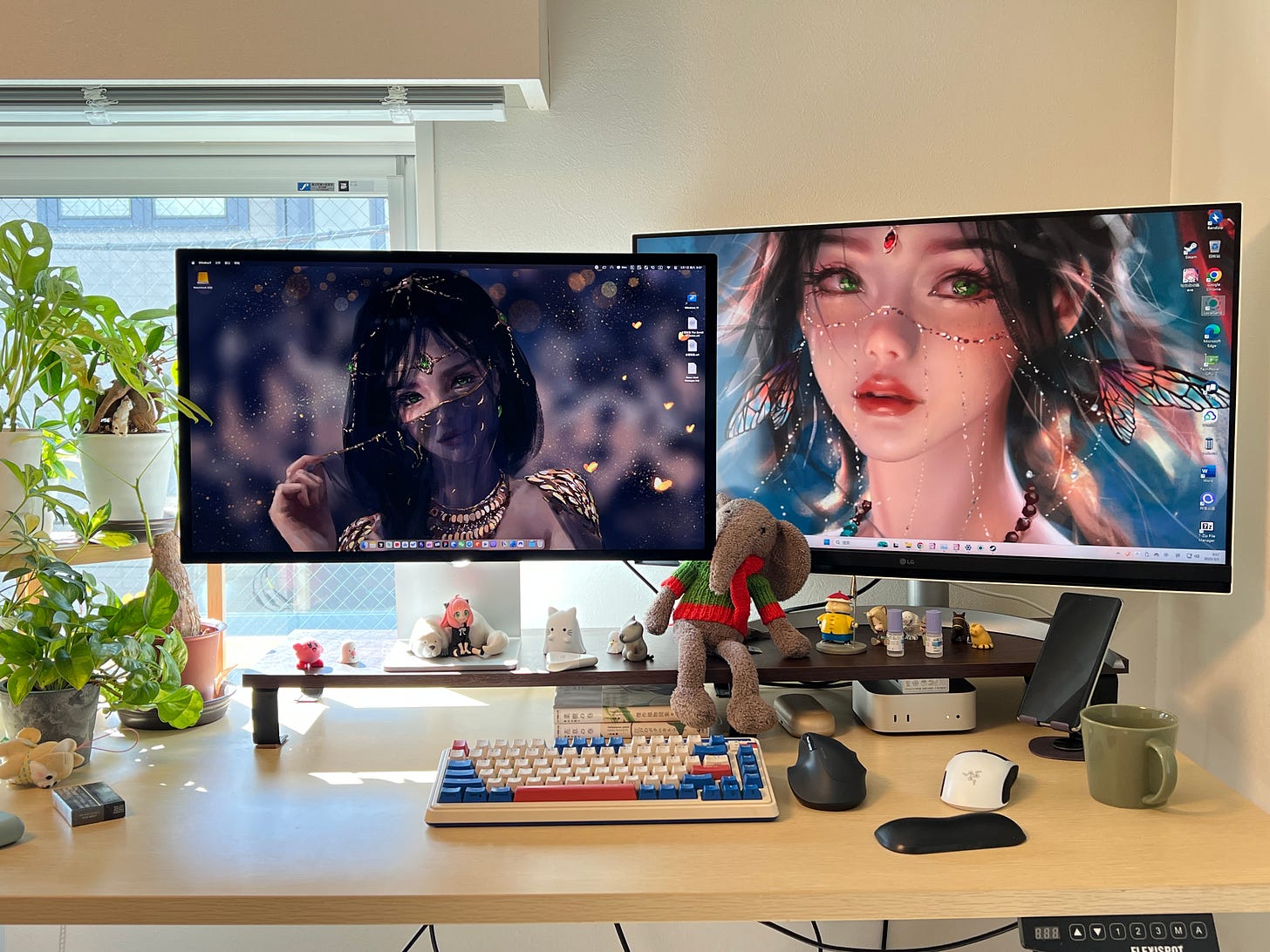Apptisan #35 - Talking with KaChiKa’s Creator: Turn Your Daily Photos into Language Learning Tools That Stick
For our 35th edition, we welcome Xie Guangzhi, creator of products like Kosaku, LazySea FM.
Name: KaChiKa
Developer / Team: Xie Guangzhi
Read this newsletter issue in Chinese (中文) .
Please describe your product.
KaChiKa is a tool that helps you learn languages through everyday life by harnessing the power of visual memory. It integrates language learning into your daily activities, making the process more natural and effective. Simply take a photo with your phone using KaChiKa, and the app instantly analyzes elements in the scene, automatically adding interactive word labels that can be tapped to hear pronunciation. The app also creates contextual sentences based on these words, helping you develop a comprehensive understanding while learning.
Was there a pivotal moment that inspired your product’s creation?
Throughout my language learning journey, I deeply understood the challenge of vocabulary retention—learning words only to forget them later, wanting to speak but unable to find the right words. These frustrating experiences are all too common. As someone who relies heavily on visual memory, I recognize the power of visualizing abstract concepts. These experiences inspired the philosophy of “integrating language into life and learning language through everyday experiences”—which became the driving force behind developing this app.
What makes your product unique compared to others in the market?
Most language learning apps today focus on memorization techniques based on textbook vocabulary lists, having users repeatedly commit words to memory. However, this approach has a fundamental problem—words learned early on lack context and often don’t apply to daily life, making it easy for users to become discouraged and give up. Based on my daily experiences living in Tokyo, I deeply integrated this “contextualized” learning method with AI technology. By learning vocabulary from photos I take in everyday situations, I create stronger memory associations and can share my experiences with friends in foreign languages.
How have you marketed your product, and what key lessons have you learned?
As an indie developer, my promotional efforts have primarily been through my own social media channels. I plan to continue sharing updates on these platforms and hope to connect with content creators in the future. Promotion has always been challenging for indie developers—most of us aren’t skilled at marketing and self-expression in public settings because coding is our comfort zone. Creating promotional content, designing marketing materials, or following trends are all skills outside our expertise. However, to ensure our hard work reaches more people, we awkwardly learn and adapt, treating promotion as a necessary task. I once saw a tweet that perfectly captured this mindset: “Every 100 lines of code deserves a tweet.”
What has been some memorable feedback since your product’s release?
The most impactful feedback has simply been “being seen.” The app was widely shared on platforms like Sspai, PriceTag, and Twitter, showing that people appreciate both the concept and my implementation. To live up to this attention, I worked intensively for a month to launch the flashcard memorization module—a suggestion from an experienced Japanese learner who contacted me after the initial release. With this addition, users can complete the entire learning cycle within the app: building their personal vocabulary from everyday photos, then practicing those words through flashcards. This experienced user also recommended implementing the currently popular FSRS (Free Spaced Repetition Scheduler) algorithm to help users memorize words more scientifically and efficiently.
Are there any products out there that you feel deserve more recognition?
Eagle. I recently purchased the lifetime version and regret not buying this product earlier. It’s truly the best solution I’ve found for collecting and organizing inspiration.
In your everyday life, are there any products that significantly contribute to your happiness?
Mac mini M4: I recently upgraded to this new computer, which is compact yet powerful with excellent value. My previous computer had storage limitations that forced me to frequently clear data manually, significantly affecting my experience. When I saw the new mini model was released, I immediately purchased it along with an external 2TB hard drive, eliminating any concerns about storage capacity.
Anya Forger figure: Anya is truly adorable. I place her under my monitor, and whenever I’m waiting for a project to compile or just taking a moment to daydream, I glance at her and my mood improves considerably.
Office desk plants: I work from home, so my workspace environment is very important to me. I like to keep plants on my desk; sometimes seeing the morning sunlight falling on them is incredibly therapeutic.
Tell us a bit about yourself and what you envision for the future.
You can call me Xie Guangzhi. I’m an indie developer who loves creating things. I particularly enjoy turning needs I encounter in daily life into apps, solving my own problems while helping others. This sense of achievement is rare and drives me to continue doing what I do. For KaChiKa’s future, I plan to expand the English version to support multilingual learning, enabling users to learn various languages, including less commonly taught ones.
About Apptisan
Apptisan is a portmanteau of “application” and “artisan”, signifying “a weekly exploration into the world of apps and the passionate artisans who create them.” Each issue is a conversation with global creators, aiming to uncover and present intriguing products to a wider audience.
For those who prefer Chinese, you can subscribe via Quail. Creators interested in featuring their products are encouraged to submit them through our form, and we’ll be in touch promptly.
Supporter Status
If you enjoy Apptisan, consider showing your support in these ways:






